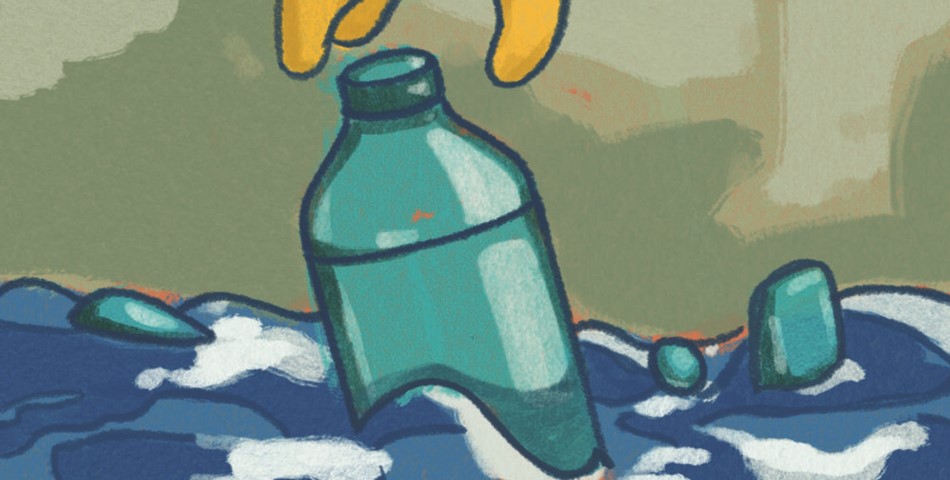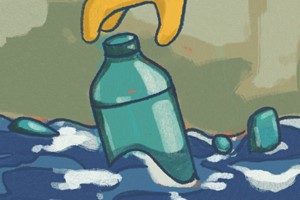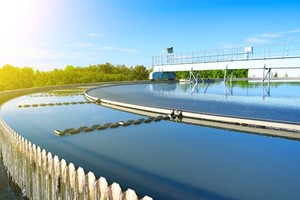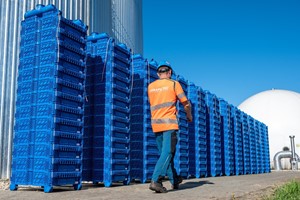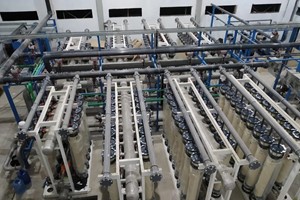Across the planet, corporations and municipalities account for over 30 per cent of accessible and renewable freshwater usage. They generate colossal amounts of wastewater containing various concentrations of elements such as copper, zinc, titanium, and mercury, which unfortunately make their way into our drinking water.
Now, instead of worrying about what’s in your next glass of tap water, imagine you could point your phone’s camera at it and know exactly what substances lie within. It sounds like complete science fiction, right? As crazy as it may seem, a team of McGill researchers recently published a ground-breaking paper documenting a new technique that may be able to detect these substances in waterways in real-time. It involves combining artificial intelligence (AI) with the company’s digital in-line holographic microscopes, also called nano-DIHM technology.
This amalgamated AI-nano-DIHM technology is made up of two essential parts: Hologram recording and reconstruction. With hologram recording, the nano-DIHM shoots out a beam of light through a pinhole that hits a water sample. From there, the object produces a magnified diffraction pattern that is recorded by a computer. The hologram is then reconstructed and processed by two aptly-named aquatic AI software programs—Octopus and Stingray.
Hundreds of previously recorded holograms were used to train Octopus and Stingray; by the end of the process, each program could accurately determine the composition of whatever sample was placed in front of them. The AIs registered an accuracy of over 99 per cent when tested on their ability to identify oil droplets in mixtures of metal oxides.
The software does not just define a sample’s composition but also assists researchers in describing the water’s characteristics.
“For the contaminants […] the things you do not know exist, [the software] would be able to identify it,” said Parisa Ariya, a professor in McGill’s Department of Chemistry and Department of Atmospheric & Oceanic Sciences and one of the lead researchers of the study, in an interview with The McGill Tribune. “By classifying the things you know […] the things you do not know can be identified physically, so it has a lot of potential.”
However, the water composition identification goes beyond describing physical characteristics such as size and shape.
“We are working at doing chemical composition as well [as] it allows, for example, [for the further study of fields] from medicine and pharmaceutics to aerosol and climate change, to pollution in air and water,” Ariya explained.
More remarkable is nano-DIHM’s processing speed—its limits are based solely on the computational power provided.
“This technology allows us to do two things—one of them is form a sensor that will be detecting contaminants [using] AI […] in the blink of an eye, 32 milliseconds, and we can do better than that,” Ariya said.
Like many recent technological advances, Ariya’s research began because of COVID-19. The research took inspiration from another of the researchers’ papers that focused on using nano-DIHM on aerosolized particles.
“COVID served as a catalyst,” Ariya said. “We wanted to serve humanity better, and we […] also […] got our alarms up. We knew that a […] major part […] was airborne, and we wanted to provide solutions.”
Nano-DIHM is not without competitors. The image resolution of nano-DIHM is worse than that of the previous method of choice—scanning transmission electron microscopy (S/TEM). But S/TEM microscopes are not portable and are far more expensive. They can weigh up to 80 kilograms, be half a metre tall, and cost anywhere from $60,000 to $250,000 USD.
Since nano-DIHM is physically much smaller than S/TEM and can work with live and moving samples—such as rushing water—scientists can bring nano-DIHM on-site and perform the technique there, hopefully decreasing the timeline for data collection and analysis. The possibilities do not end there.
“Oil spills happen around the world very, very often, [so hopefully] we can look into [spills] for forecasting as well as […] how we can actually sustainably remove it, and how much […] less energy […] we can use,” Ariya said.



